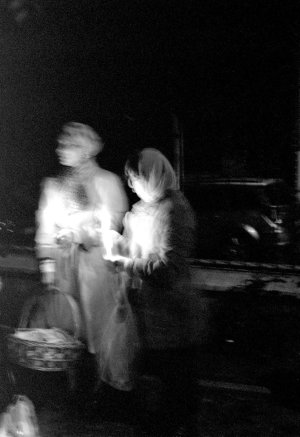Julian Tanase
Well-Known Member
Night of the Easter, in an orthodox churchyard, where the people in this village where I was on visit) are holding their vigil. Ancient tradition, deeply rooted in the orthodox religious belief. Very impressive, to see all these people here united by this custom. It is perhaps the most important religious event of the year; they use this vigil in order to meet with their friends and relatives, socializing quite a lot, swapping recipes and learn about what happened to X who left the village long time ago. The youngsters are present in large numbers, for them is a night when the parents are a bit lenient on them, regarding the hour of getting back home.
I was not exactly happy about the photographs taken that night, a lot of blur, which is understandable: people are not still most of the time. However, I do like this one very much, and I cannot put my finger on why. Perhaps the place and the occasion is at work here? No idea, but I do hope you like this one.
Nikkormat FT3, Svema Foto 400.

I was not exactly happy about the photographs taken that night, a lot of blur, which is understandable: people are not still most of the time. However, I do like this one very much, and I cannot put my finger on why. Perhaps the place and the occasion is at work here? No idea, but I do hope you like this one.
Nikkormat FT3, Svema Foto 400.

